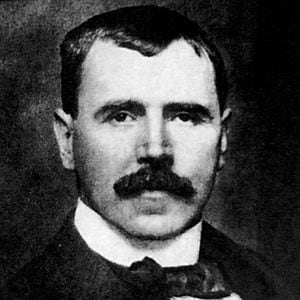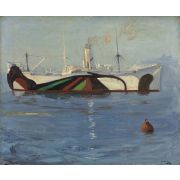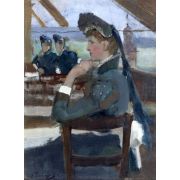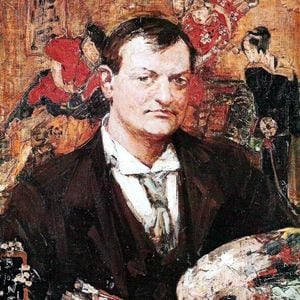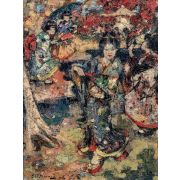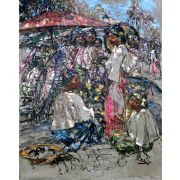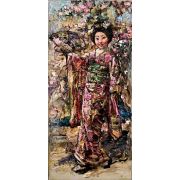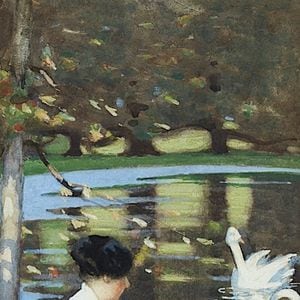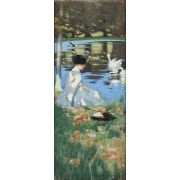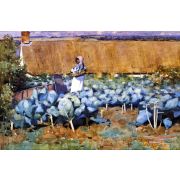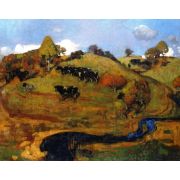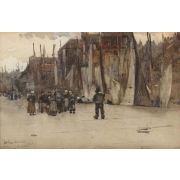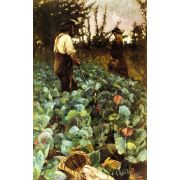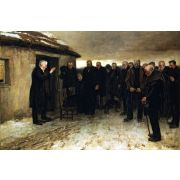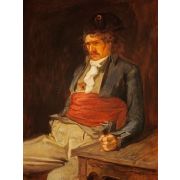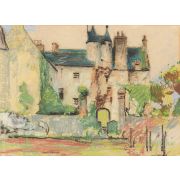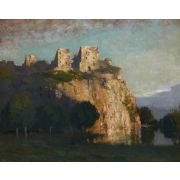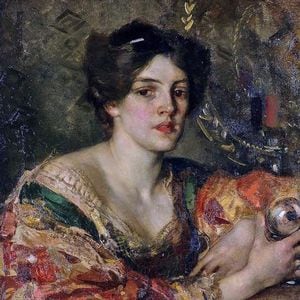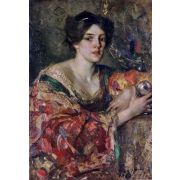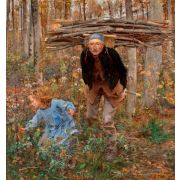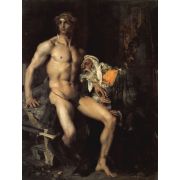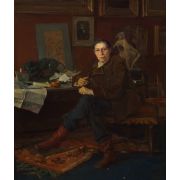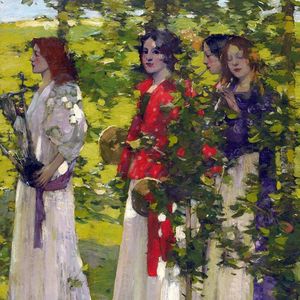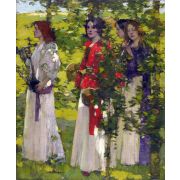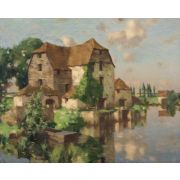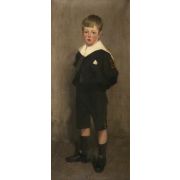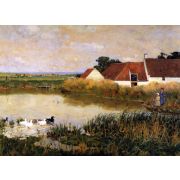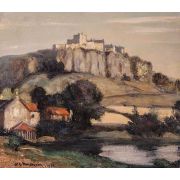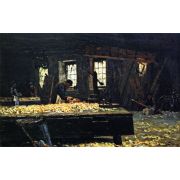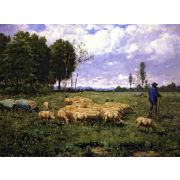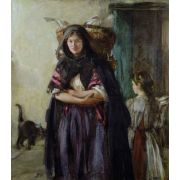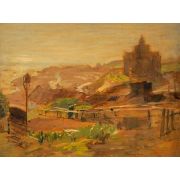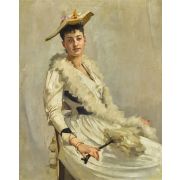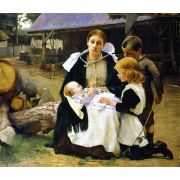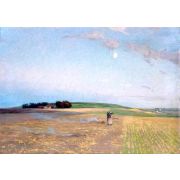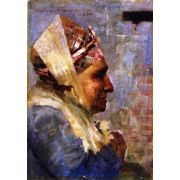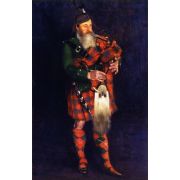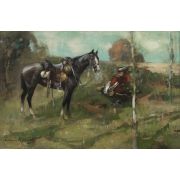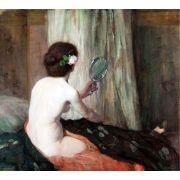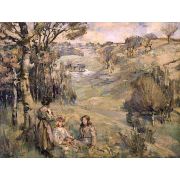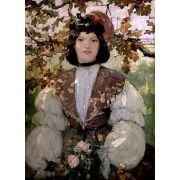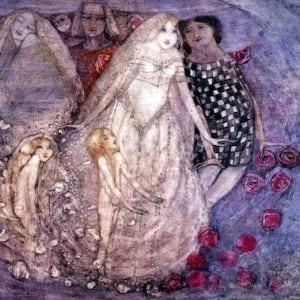
Glasgow School
Glasgow School
1 to 14 out of 14 artists
Sir John Lavery, R.A.
1856 -1941, Irish / Glasgow School and Impressionism, 738 works
Edward Atkinson Hornel
1864 -1933, Scottish / Glasgow School, 392 works
George Henry, R.A., R.S.A., R.S.W.
1858 -1943, Scottish / Glasgow School, 152 works
Arthur Melville
1855 -1904, Scottish / Glasgow School, 143 works
James Guthrie
1859 -1930, Scottish / Glasgow School, 109 works
James Paterson
1854 -1932, Scottish / Glasgow School, 97 works
Edward Arthur Walton, R.S.A., P.R.S.W.
1860 -1922, Scottish / Glasgow School, 85 works
Jules Bastien-Lepage
1848 -1884, French / Realism , Glasgow School , and Naturalism, 59 works
David Gauld
1865 -1936, Scottish / Glasgow School, 54 works
William York MacGregor
1855 -1923, Scottish / Glasgow School, 44 works
Alexander Ignatius Roche
1861 -1921, Scottish / Glasgow School, 41 works
Alexander Mann
1853 -1908, Scottish / Glasgow School, 24 works
William J. Kennedy
1859 -1918, Scottish / Glasgow School, 19 works
Bessie MacNicol
1869 -1904, Scottish, Female Artist / Glasgow School, 14 works
1 to 14 out of 14 artists
The Glasgow School was a group of influential artists and designers who came together in Glasgow, Scotland, in the 1870s and did their best work from the 1890s to about 1910. The Four (also known as the Spook School), the Glasgow Girls, and the Glasgow Boys were all groups that stood out. They were part of the international Art Nouveau movement and created the Glasgow Style (see Modern Style (British Art Nouveau style) for more information).
At the end of the 19th century, Glasgow's economy was doing very well. This led to more unique contributions to the Art Nouveau movement, especially in architecture, interior design, and painting.
The Four were among the most influential groups that helped define the Glasgow School. They were Margaret MacDonald, a painter and glass artist, her husband, the famous architect Charles Rennie Mackintosh, Margaret's sister Frances, and Herbert MacNair. Together, The Four set the tone for the Glasgow Style, a mix of styles like the Celtic Revival, the Arts and Crafts Movement, and Japonisme, famous in the modern art world of continental Europe. The Four, also known as the Spook School, greatly affected what Art Nouveau meant in the long run. Spook School, also called Spooky School or Ghoul School, got its name because of their work "distorted and conventionalized human... form."
Margaret and Frances MacDonald, who were both members of The Four, Jessie M. King, Annie French, Helen Paxton Brown, Jessie Wylie Newbery, Ann Macbeth, Bessie MacNicol, Norah Neilson Gray, Stanmore Dean, Dorothy Carleton Smyth, Eleanor Allen Moore, De Courcy Lewthwaite Dewar, silversmith Agnes Banks Harvey, and Christian Jane Fergusson are all considered to be part of The Glasgow In the 1940s and 1950s, ceramic artists like May Wilson and Eliza Bell kept up the tradition by hand-painting different items with floral patterns.
Between 1885 and 1920, Glasgow had a "period of enlightenment" where women actively pursued art careers, and the Glasgow School of Art had a significant period of "international visibility." This was a time when women were able to do well in Glasgow.
The name "Glasgow Girls" didn't come up until much later. In the 1960s, people tried to give the work of the city's women artists the attention they deserved to balance all the talk about the Glasgow Boys. The head of the Scottish Arts Council at the time, William Buchanan, is thought to have been the first person to use the name in the catalog for a 1968 Glasgow Boys exhibition. People have said this "invention" is an "ironic reference" to the same group of men. In 1990, Jude Burkhauser put on a big show called Glasgow Girls: Women in Art and Design 1880–1920. This showed how important the term Glasgow Girls was.
